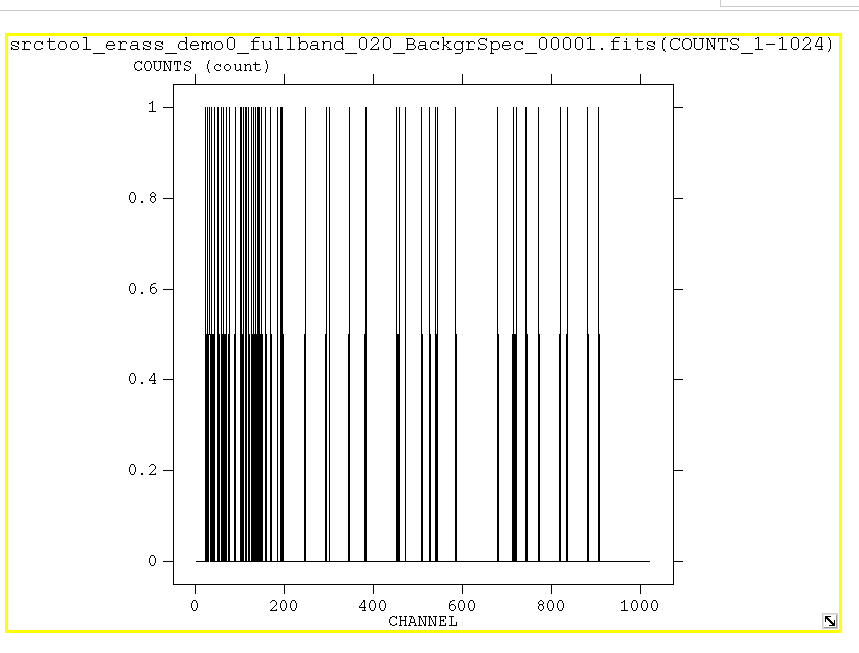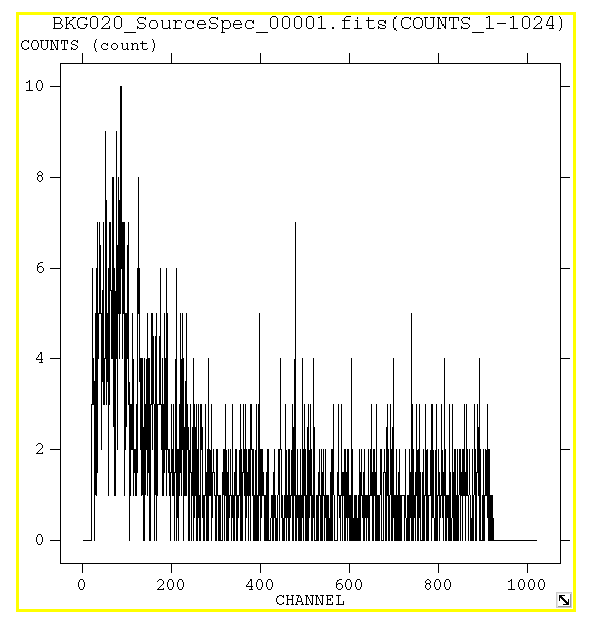I'm extracting spectra for nearby clusters (0.02 < z < 0.03) and I'm having issues with extracting background spectra. When I extract them at the same time as the source spectra (using BACKREG), the background spectra are often empty or have far fewer events than I would expect:

Additionally, the scaling values in the headers of these spectra seem off -- BACKSCAL and REGAREA are both 0 for the background. The srctool command used for this was:
Code: Select all
eventfiles=output/l500_testing_rebin/erass_demo0/evtool_erass_demo0_srctool.fits suffix=.fits todo=SPEC srccoord=fk5; 11:44:29.55, +19:48:53.18 clobber=yes lcemin=0.5 lcemax=2.0 extpars=5748.54549598445 srcreg=Regions/r500//Sourceerass_demo0.reg prefix=output/l500_testing_rebin/erass_demo0/srctool_tests/20240815_140532/srctool_erass_demo0_fullband_ backreg=Regions/r500//Backgrounderass_demo0.reg gtitype=FLAREGTI exttype=TOPHAT psftype=NONE
This was produced with:
Code: Select all
srctool eventfiles=output/l500_testing_rebin/erass_demo0/evtool_erass_demo0_srctool.fits suffix=.fits todo=SPEC srccoord=fk5; 11:44:29.55, +19:48:53.18 clobber=yes lcemin=0.5 lcemax=2.0 extpars=5748.54549598445 srcreg=Regions/r500//Backgrounderass_demo0.reg prefix=output/l500_testing_rebin/erass_demo0/srctool_tests/20240815_140342/srctool_erass_demo0_fullband_/BKG backreg=NONE xgrid=100 gtitype=FLAREGTI exttype=TOPHAT psftype=NONE Code: Select all
circle(11:44:29.55,+19:48:53.18,2467.275726876526")
-circle(11:47:58.94140447123732,+20:13:11.159557856494189,60.0")
-circle(11:41:16.26309590446425,+21:56:25.036744948915555,60.0")
...
Code: Select all
-circle(11:44:29.55,+19:48:53.18,5748.54549598445")
circle(11:44:29.55,+19:48:53.18,6000.67279357512")
-circle(11:47:58.94140447123732,+20:13:11.159557856494189,60.0")
-circle(11:41:16.26309590446425,+21:56:25.036744948915555,60.0")
...
Is there any reason for this difference in the extracted spectrum? And is there anything I've missed that can make srctool produce results closer to what I'd expect when doing combined source and background spectra? If not, what calculations are needed to evaluate the scaling keywords in the headers of these files?
Thanks in advance for all your help.
Joe.